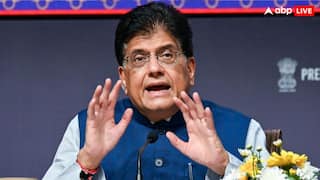After Domestic Mobile Manufacturing Success, India Now Focusing On Export-Led Growth: Vaishnaw
Vaishnaw noted that India has achieved a crucial milestone in the development of a domestic component ecosystem.

Minister of Communications and IT Ashwini Vaishnaw disclosed the government's strategic shift toward export-led growth in the realm of smartphones and electronics, following its success in domestic mobile manufacturing. During an interview with the Mint, Vaishnaw highlighted India's integration into the global value chain (GVC) for mobile phones and electronics, signalling a departure from the previous emphasis on import substitution. "Today India has become part of the global value chain (GVC) of mobile phones and electronics. Now we are looking at a strategy of export-led growth rather than simply import substitution and looking at our needs," Vaishnaw stated. He emphasised the significant opportunity for India to rapidly expand its exports.
To facilitate export-led growth, the Ministry of Electronics and IT (Meity) will collaborate closely with the Ministry of Finance to streamline the movement of goods across borders. Vaishnaw stressed the importance of expediting this process, given the nature of the GVC, where goods traverse borders multiple times before the final product is assembled. Factors such as import duties, processes, automation, and warehousing will be addressed to enhance the smooth flow of transactions.
The minister's comments come at a pivotal moment, considering the successful model presented by Vietnam, which, with a domestic market worth $2 billion, exports around $40 billion in mobile phones and electronics. In comparison, India's domestic market is valued at $33 billion, with exports reaching $11 billion as of FY23, indicating considerable room for growth.
Vaishnaw noted that India has achieved a crucial milestone in the development of a domestic component ecosystem. He highlighted the importance of crossing a volume threshold in electronics manufacturing, beyond which components begin to be sourced domestically. Currently, close to 30 per cent of components are manufactured domestically in volume terms, a figure expected to grow rapidly.
Comparing India's progress to that of China and Vietnam, Vaishnaw pointed out that India's domestic value addition in electronics manufacturing is approximately 15-18% in 9 years, positioning it closely to Vietnam's achievements. Semiconductors play a pivotal role in boosting domestic value addition.
Addressing the complexity of the GVC, Vaishnaw explained the necessity of efficient processes, automation, and warehouses. The movement of components across borders multiple times necessitates a well-coordinated system. Warehouses play a crucial role in storing products for multiple manufacturers and supplying components.
The government's MOOWR Scheme (Manufacturing and other operations in a customs-bonded warehouse) is designed to support this process, allowing manufacturers to import components for domestic production for export purposes without incurring import duties or other taxes. However, the recent imposition of IGST (integrated goods and services tax) at a rate of 18 per cent in the FY24 Budget has raised concerns, with semiconductor manufacturer Micron Technology expressing apprehensions about its potential impact on domestic manufacturing under various production-linked incentive schemes.






































